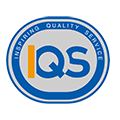1 / 1
Down wear quality inspection
| Model No. : | Inspection service |
|---|

Product description
The Most Common Quality Issues, That Buyers Of Clothing And Textiles Must Be Aware Of?
First is some quality issues are due to the materials and accessories. and Second is some problems are due to the patterns or to the way the fabric was cut. A common temptation for factories is to reduce fabric consumption.
How To Avoid These Issues?
- work with a good cut & sew workshop. And make sure they don`t subcontract to a cheaper workshop.
- Don`t push them to rush production. If you have a firm delivery deadline, make sure all the samples` approvals are done well in advance.
- Many buyers send an inspector once during the sewing process, and again after production is done. By catching issues and giving feedback to the sewing line leaders, this approach tends to improve quality. Pre-shipment inspections are the last time quality can be checked in China and are essential.
What Sort Of Tests And Quality Checks Are Essential In Clothing And Textiles Manufacturing?
List of tests that can be done on site (in the factory):
- Counting the number of stitching points per inch/cm for the main stitching
- Checking the types of stitching, and the seam allowances
- Measuring the fabric weight, for the main fabric
- Comparing of colors (of fabrics, accessories, and stitching threads) with a TPX or TCX Pantone book / lab dips / fabric swatches
- Checking seam strength, by pulling in both sides with normal force
- Checking the strength of stitches for all accessories (buttons, bows-)
- Checking the dry color fastness, by rubbing a piece of white tissue / cotton fabric
- For certain accessories such as fabric flowers: checking the frayability at edges
- Doing a fitting test, to checking fitting but also to see overall outlook
- Making sure the lining is never longer than the self fabric, and is not visible during fitting tests
- Making sure the products look good and have no wrinkles when presented on a hanger
- Making sure the products are as flat as possible in cartons and the foam parts (if applicable) don`t get crushed
- Making sure there is no color shading on the same product, and no strong color shading between different products
- Taking very clear photos of the care & content label (composition, care instructions, country of origin-)
And the common checkpoints:
- a. Appearance: do they look good as presented at point of sale, when unpacked, and when worn? Are colors and fabrics the same as approved?
- b. Conformity of workmanship: is production conform to approved pre-production samples?
- c. Construction: are the stitchings strong, will the garments survive normal wear & tear for a little while, etc.
- d. Measurements: will the fitting be good, in each size?
- e. Finishing: are the garments ready to be sold, or need further work?
- g. Packing and labeling: is it conform to the buyer`s requirements?
Depending of the type of clothing and textiles product and the market of the importer, many other tests can be inserted in the inspector`s checklist:
- Checking the direction of threads (the [grain line") of the main fabric, compared with client`s sample or client`s pattern
- Measuring the stretchability of fabrics and elastics, compared with client`s sample or specs
- Counting the number of threads (i.e. the construction of the fabric)
- Doing a shrinkage test, after normal cycle washing and natural drying
- Checking color fastness to washing, by washing a sample with normal cycle together with a piece of white cotton fabric
- If there are strings that could cause strangulation: measuring the length of strings
- For some textile products such as underwear, measuring the height of the garment on the hanger (because of shelf space and outlook consistency).
What Sort Of Product Information Must The Buyer Provide To The Inspection Company?
Many professional importers provide a [tech pack" that includes:
- Types of fabrics and accessories (in detail)
- All labels
- Size charts
- Comments about successively reviewed samples (this is useful because the same issues might be found in production)
And they usually have a packing manual that provides general rules about the size of cartons, shipping marks, polybags, folding way, and so on.
For a small company that starts to purchase garments, this is not a super-human effort as long as they have a template for inspiration.
How Can IQS Service Help Importers Prevent Quality Issues When Buying Clothing And Textiles From China?
IQS Service helps buyers secure their entire supply chain:
- Define a quality standard (what defects are critical, major, minor)
- Document expectations related to the garments, their packing, and their labeling
- Audit and vet a potential supplier`s factory
- Review pre-production and production samples
- Review the paper patterns and the cutting process
- Perform in-line inspections
- Drive corrective actions if needed
- Confirm average quality via a final inspection
Send your inquiry to this supplier













